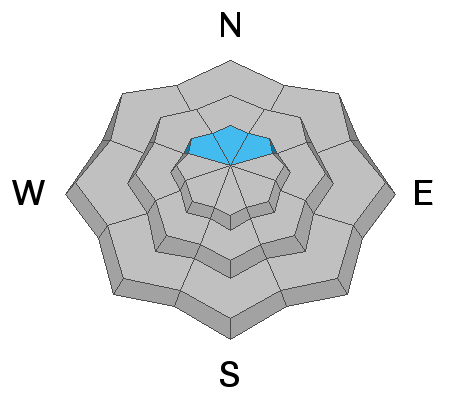My biggest concern remains old sugary snow near the ground. This stuff will often strike long after we think conditions are solid. Let's look at the good and bad with this.
The Good:
- Loose sugar snow near the ground is limited to the higher elevation more northerly facing slopes.
- There have been very few recent avalanches breaking into old loose sugary snow near the ground.
- The most recent avalanches that did break into old snow were fairly "pockety" in nature. They were not taking out an entire slope but rather just a portion of it.
- I have not experienced any "collapsing" or "whoomping" of the snowpack since just after Thanksgiving. This indicates the snowpack is stubborn to break into sugar snow near the ground.
- In general, all of the snow since Thanksgiving has consolidated into a very strong layer of snow. It seems hard to break through this layer to get the sugar snow to fail near the ground.
The Bad:
- I can still find slopes that hold VERY loose sugary snow near the ground. Lots looser than I feel comfortable with getting onto those slopes despite all of the positive things I've seen. Tests in these areas show failure although they are stubborn to fail.
So, the way I see it is that it is fairly unlikely to trigger a dangerous avalanche that breaks into this loose sugary snow near the ground given that it is mainly only found in the higher northwest through northeast facing slopes AND there is a stout and strong layer of snow that overlies it. However, I want to see that loose sugary snow gain some more strength before I totally trust it. What I'd like to see is a nice storm roll through and add a couple of feet of snow to the snowpack. If we didn't see any significant avalanches during a storm like that, I'd feel good about laying the old sugar snow to bed.









